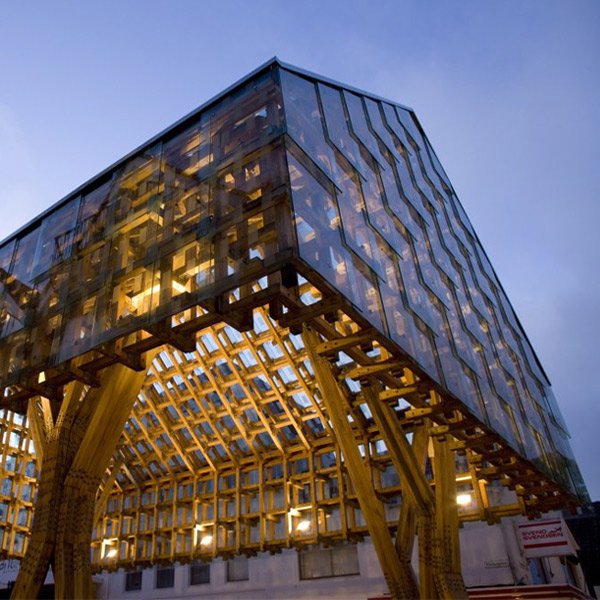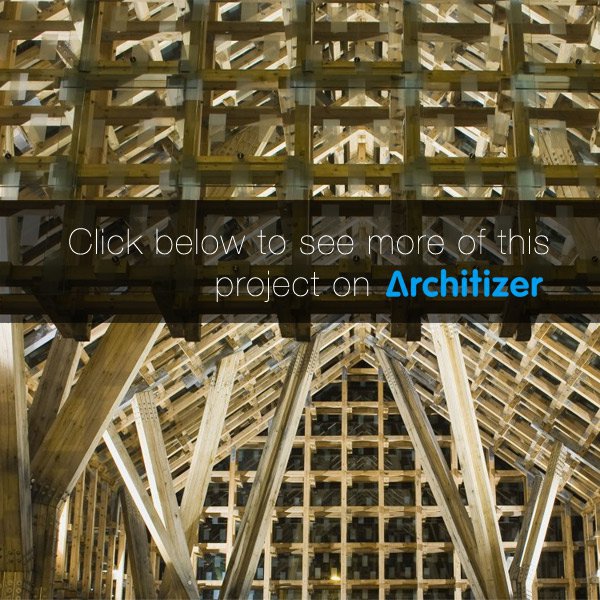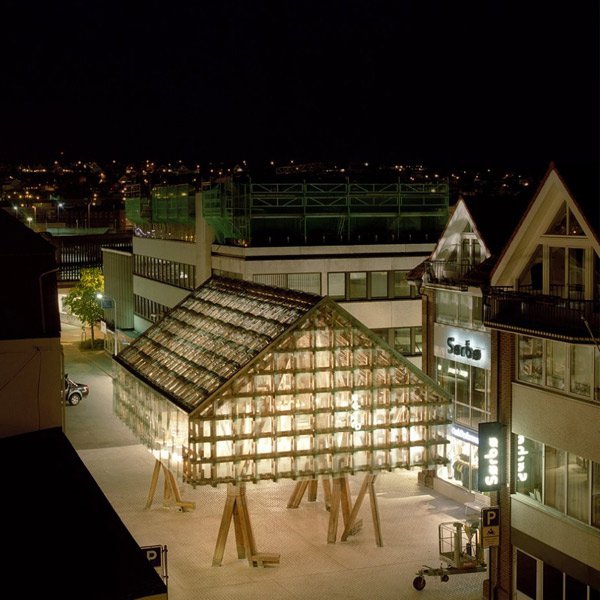Site:
The site is a small square in Langgata in the center of Sandnes. With approximately 60 000 inhabitants, Sandnes is half the size of its close neighbor Stavanger. The two cities were the cultural capital of Europe 2008. Langgata is the heart of the older part of the town, and the traditional area for shopping and a Saturday stroll.
During the la... read more
Site:
The site is a small square in Langgata in the center of Sandnes. With approximately 60 000 inhabitants, Sandnes is half the size of its close neighbor Stavanger. The two cities were the cultural capital of Europe 2008. Langgata is the heart of the older part of the town, and the traditional area for shopping and a Saturday stroll.
During the last decades the city center has moved towards the sea front, into the former industrial areas along the harbor. Langgata is now in competition with the sea front area and its indoor shopping center.
Competition – program:
As part of the program of the Cultural capital of Europe 2008, Norwegian Wood aimed at realizing a series of exemplary building projects through international architectural competitions.
As one of the Norwegian Wood projects, the municipality of Sandnes asked for a pavilion that could revitalize Langgata. The pavilion should be a shelter for different types of activities; a meeting point, a market place and a place for concerts and performances.
Project ambitions:
The team of Atelier Oslo and AWP developed the competition project during in a series of workshops in Paris and Oslo, including a trip to the site. From the interpretation of the site and the program, three main ambitions were the formulated:
- an iconographic, recognizable and big structure; a possible landmark for Sandnes
- an open, flexible and informal space, giving priority to the everyday urban life
- interaction with weather and daylight to create a changing experience for the daily passersby
Floor
The floor is light concrete, cast on site as a continuous surface. The concrete is polished and has a sandblasted pattern which creates the needed friction. The light colored floor enhances the play of shadows and light from the roof. The smoothness and precise detailing gives an interior feeling to the whole square.
Columns
The roof is held up by four groups of columns. The column members are 150x150mm massive oak with steel joints. The members spread out to distribute the pressure of the roof and secure lateral stability. In some places the columns form benches when meeting the ground. The brackets of the columns were made telescopic to be able to match the level of precision of the roof.
The columns are individual and sculptural, in contrast to the simple shape of the roof. The columns are withdrawn from the edge of the roof to be protected from the rain, but also to blur the definition of inside and outside. The asymmetrical positioning of the columns creates different informal spaces.
Roof
The roof construction consists of laminated pine with steel joints. The precision level of the roof demanded laminated wood, which ruled out the use of oak. The construction is a double grid made solely of 90x90mm members. This uniform structure, where there is no division between primary and secondary elements create an abstract and lightweight sensation. The construction creates a rich play of shadows and light in the roof and on the floor.
Glass
The wooden roof is covered with laminated glass. The glass panels are mounted in an overlapping pattern, as in a traditional slate roof. The overlap incorporates eventual movement between the panels. This allows
the glass to be mounted directly onto the wooden structure, avoiding the typical steel profiles and substructure. A translucent pattern is printed on the panels, to add to the light filtering qualities of the project.
Lighting
Electricity
Water
Process:
A series of model studies were carried out to develop the project. From scale models of the complex geometry of the columns and the proportions and light filtering qualities of the roof, up to 1:1 studies of the glass silk screen print.
The complex geometry called for a further development in a digital model. The chaotic nature of the structural system could not be split into two-dimensional parts, but demanded a global static evaluation that could only be done in a digital model.
All involved consultants and contractors collected the information that they needed from the same digital model. The architects coordinated the input from the consultants and revised the digital model accordingly. The model was also used as a communication tool and as assembly instruction directly from the computer screen.
(foto fra Timber)
collapse Type Public - Community Center
Location Langgata
Norway
Building status built in 2008
sorce:
www.architizer.com






